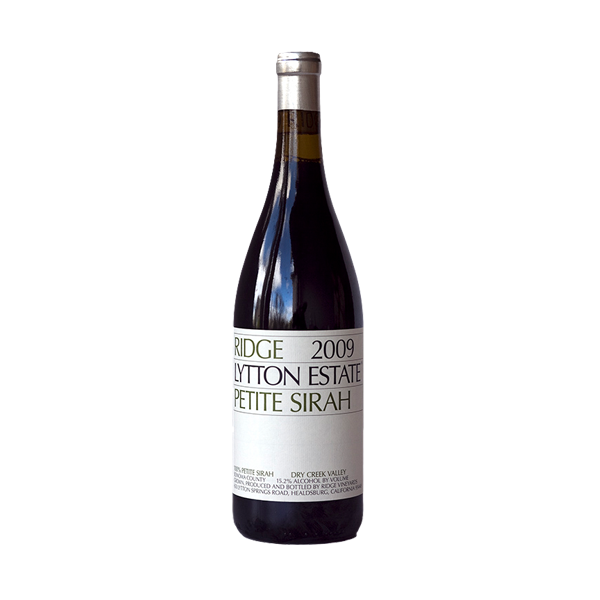
2009 Lytton Estate Petite Sirah
Wine Information
100% Petite Sirah
Vintage
2009
Vineyard
Lytton Springs
Appellation
The hills and bench land separating Dry Creek and Alexander Valleys
Alcohol By Volume
15.2%
Winemaker Tasting Notes
Nose of blackberry, pepper, mint and floral notes. Full bodied palate with dark layered fruit, cocoa, well-coated tannins and a long minerally finish. JO (01/19)
Vintage Notes
This is our first national release of Lytton Estate Petite Sirah. In 1997, we planted an unmixed block which, as it matured, produced wines of outstanding quality. Grapes from this rocky, east-facing slope are deep-colored and intense. Hand-picked in early October, they were de-stemmed, but left uncrushed, to ferment on their natural yeasts as whole berries. Oncedaily pump-overs controlled tannin extraction; the wine was pressed at nine days, when dry. After malolactic, it was racked to air-dried american oak for fifteen months of aging. This hundred-percent varietal wine shows the structure, balance, and complexity that can be achieved when soil and varietal are perfectly matched. It will soften and evolve over the next ten years. JO (11/09)
History
The oldest petite sirah vines on our Lytton Estate were planted in 1901 and the youngest in 1998. We made our first wine from the property in 1972 and until 2002 when we bottled portions of the petite sirah as a separate wine for a limited release, it had always been included in the Lytton Springs zinfandel. In 2003 we made a second limited release. This is the first release of the Lytton Estate Petite Sirah to the national market.
Growing Season
Rainfall: Thirty-four inches (below normal)
Bloom: Late May
Weather: Dry winter saved by spring rains. Mild summer with harvest beginning a full two weeks later than usual.
Winemaking
Harvest Dates: 3 October
Grapes: Average Brix 25.5
Fermentation: No inoculation; natural primary and secondary. Pressed at nine days.
Barrels: 100% air-dried american oak barrels (20% new, 30% one and two years, 50% three to six years old)
Aging: Fifteen months in barrel
All estate grown grapes, hand harvested. Fermented on the native yeasts, followed by a full malolactic on the naturally occurring bacteria. No inoculation. Minimum effective sulfur for this wine (35 parts per million at crush; 210 ppm over the course of fifteen months of barrel aging). No processing whatever other than destemming and partial crushing, and, at bottling, pad filtration.
Press
Connoisseurs’ Guide (June 2012): “Not surprisingly, given the name on the label, this one stood out in our tastings for its deeper fruit and its sophisticated layering of ripe blackberries, peppery spice and suggestions of dark soils. Full in body and fully ripened, the wine is deep and supple from first to last on the palate, and the late-arriving tannin that puts it rough stamp on the finish is nothing more than one should expect from this combination of maker and source. There will be those who are happy to drink it now with chewy chunks of charred chuck, but count us as among those who will lay it away for five to ten years while it rounds out.” Rated: 92 (**)
Consumer Tasting Notes
Average Rating: 90.6
No. of Tasting Notes: 51
View this wine on CellarTracker
Food Pairings
See all food pairing recipes we have created specifically for this wine.
See pairingsWait!
In order to qualify for user related discounts, you must log in before proceeding with checkout. Click the button below to log in and receive these benefits, or close the window to continue.
Log In